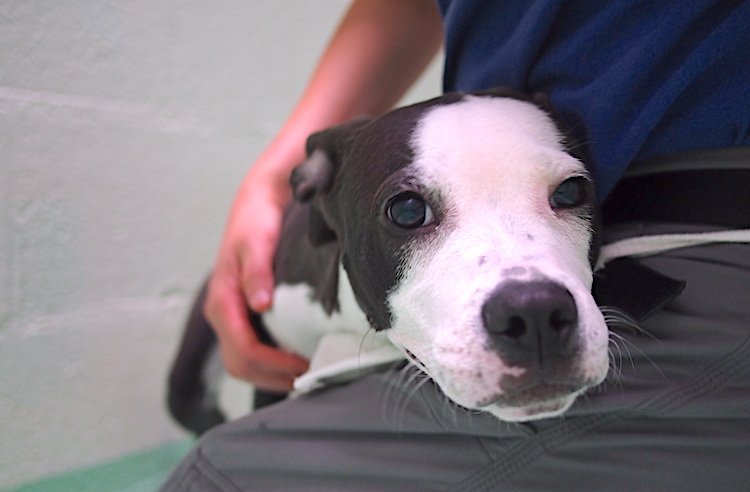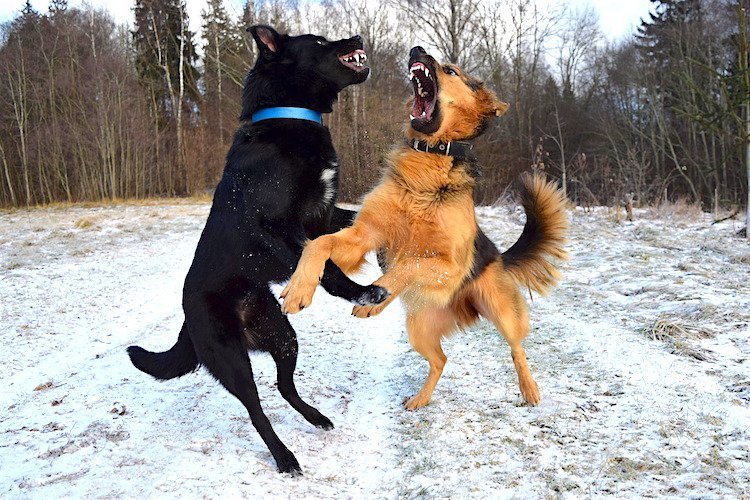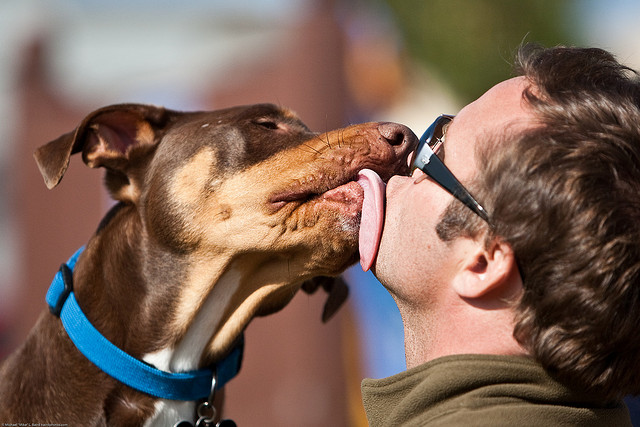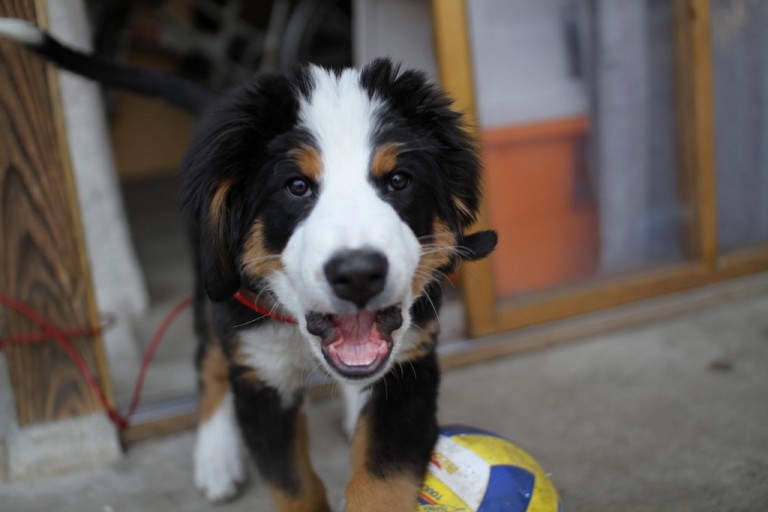Understanding Ringworm in Dogs: Causes, Symptoms, and Treatment
Discover how to identify and treat ringworm in dogs. Learn about its causes, symptoms, and prevention to keep your pet healthy and infection-free.
This pet health content was written by a veterinarian, Dr. Pippa Elliott, BVMS, MRCVS. It was last reviewed on July 5, 2024

- Have You Ever Had Ringworm?
- Ringworm and People
- Recognizing Ringworm in Dogs
- Ringworm in Dogs
- How Ringworm Spreads Among Dogs
- Reducing the Risk of Infection
- Environmental Control and Cleaning
- Preventative Measures to Avoid Ringworm
- Treatment
- When to Seek Veterinary Help
- Frequently Asked Questions (FAQ)
- References
Don’t Guess When It Comes To Your Pet’s Care


Don’t Guess When It Comes To Your Pet’s Care
Have You Ever Had Ringworm?
About 1 in 5 people will catch ringworm at some point in their lives. In healthy people, this infection is itchy but not serious and is easily treated with an ointment. However, in the very young, the elderly, or those with weak immune systems, ringworm can be more worrying.
Ringworm in Dogs as a Source of Infection
- Common Source: Pets, including dogs, are a common source of ringworm infection for people.
- Symptoms in Humans: In healthy individuals, ringworm manifests as an itchy rash that is not serious and is treatable with topical ointments.
- Vulnerable Populations: Children, the elderly, and immunocompromised individuals are at greater risk for more severe ringworm infections.
By keeping a close eye on your pet’s health and seeking prompt treatment, you can minimize the risk of ringworm spreading. If you suspect your dog might have ringworm, consult your veterinarian as soon as possible.
Ringworm and People
Despite the name, ringworm is a fungal infection and has nothing to do with worms.
Causes and Transmission
- Fungi Involved: The fungi most commonly involved are from the microsporum or trychophyton family. These fungi are widespread in nature, including in soil.
- Infection Risk: When dogs go digging or rooting around in the garden or woods, they risk picking up this infection. Learn how to stop your dog from digging.
People can acquire infection directly by touching the fungus on a fence post or stroking an infected dog, or indirectly from contact with infected hairs shed by their dog.
Symptoms and Immune Response
- Immune Response: In healthy people, our immune systems fight the infection and keep it under control.
- Common Sign: The most common sign of ringworm infection is a red, ring-like sore on the skin, which sometimes looks silvery. This is often found on the hands from touching infected materials or on the arms and legs.
Complications and At-Risk Populations
- Itchiness and Secondary Infections: Ringworm can be itchy, and scratching will break the skin’s surface, potentially leading to a secondary bacterial infection.
- At-Risk Populations: For children, the elderly, or those undergoing chemotherapy with a weak immune system, infection can be both more widespread and more serious. Therefore, if you suspect ringworm, it’s important to see your doctor and get your dog (as a possible source of infection) checked by the vet.
Recognizing Ringworm in Dogs
Ringworm can manifest in various ways, and recognizing the signs early can help in prompt treatment. Common symptoms include:
- Circular patches of hair loss
- Scaly, red skin lesions
- Brittle or broken claws
- Itchiness and scratching
Ringworm in Dogs
Paws and faces are commonly infected by ringworm in dogs as a result of digging or sniffing. This starts as a patch of hair loss, especially around nail beds, which gradually gets bigger as the neighboring hair shafts are contaminated and fall out. The typical appearance of ringworm on a muzzle is a bald circular patch, a little target on their nose.
Causes and Symptoms
- Initial Signs: Ringworm often starts as a patch of hair loss, especially around nail beds, and gradually gets bigger as neighboring hair shafts are contaminated and fall out.
- Typical Appearance: On a dog’s muzzle, ringworm appears as a bald circular patch, resembling a target on their nose.
- Risk Factors: Stray animals, especially puppies, are at risk because of poor health and bad conditions.
Contamination and Spread
- Fungal Habitat: The natural home for this fungus is wrapped around the hair shafts deep within the hair follicle, which damages the hair, causing it to shed and fall out.
- Infection Source: Each shed hair is heavily contaminated, making it a ready source of infection for the next person or dog that comes along. Ringworm can survive for 18–24 months in the environment, acting as a possible source of infection.
By keeping a close eye on your dog’s health and seeking prompt treatment, you can minimize the risk of ringworm spreading. If you suspect your dog might have ringworm, consult your veterinarian as soon as possible.
How Ringworm Spreads Among Dogs
Understanding how ringworm spreads can help in preventing the infection. The fungus can be transmitted through:
- Direct contact with an infected dog
- Contact with contaminated objects such as bedding, grooming tools, or furniture
- Spores in the environment, which can remain infectious for months

Reducing the Risk of Infection
Should people with pets be worried about ringworm? The short answer is no, but it pays to be vigilant. If you have skin lesions that could be ringworm, see your doctor — a simple cream or antifungal medication should clear it up.
Prevention Tips
- Regular Checks: Prevention involves regularly checking your dog and getting any bald patches checked by the vet.
- Diagnosis Methods: The most widely used method for diagnosing ringworm in dogs is by taking hairs from the pet and looking under the microscope for signs of fungi wrapped around the hair shaft, or culturing the hairs to see if the ringworm fungus grows.
- UV Lamp Test: Around 50% of ringworm fungi glow fluorescent green when viewed in a dark room with a UV lamp (a Wood’s Lamp or black light). This can give a quick positive if the patch lights up green, but an absence of glow is no guarantee the pet is clear. Learn more about Wood’s Lamp.
Environmental Control and Cleaning
To prevent the spread of ringworm, it’s crucial to maintain a clean environment. Consider the following steps:
- Regularly clean and disinfect your dog’s living area
- Wash bedding, toys, and grooming tools frequently
- Vacuum floors and furniture to remove hair and skin flakes
Preventative Measures to Avoid Ringworm
Preventative measures can significantly reduce the risk of ringworm in dogs. These include:
- Keeping your dog’s living environment clean and dry
- Avoiding contact with stray or infected animals
- Regular grooming and health check-ups
Treatment
- Shaving Fur: If a dog is diagnosed with ringworm, depending on how widespread the infection is, the vet may suggest shaving off the fur. This reduces the amount of hair shed in the home.
- Isolation: To decrease the risk of passing infection to other animals, consider isolating the pet.
- Antifungal Treatments: Treatment for dogs commonly includes an antifungal shampoo and either tablets or an oral liquid form of antifungal medication.
Don’t become paranoid about ringworm and your pets, but seek help early from your doctor and veterinarian to prevent a bigger problem from developing.
When to Seek Veterinary Help
Knowing when to seek veterinary help can prevent complications. Contact your vet if:
- Your dog shows signs of hair loss or skin lesions
- The symptoms persist despite home treatments
- You have other pets or immunocompromised individuals at home
Frequently Asked Questions (FAQ)
How to treat ringworm in dogs?
Ringworm in dogs is typically treated with antifungal medications prescribed by a veterinarian.
How to treat ringworm in dogs at home?
At-home treatment for ringworm in dogs involves using antifungal shampoos and medications as directed by a veterinarian.
How to get rid of ringworm in dogs?
To get rid of ringworm in dogs, follow a vet-prescribed treatment plan, including antifungal medications and proper hygiene.
What causes ringworm in dogs?
Ringworm in dogs is caused by a fungal infection, often from the microsporum or trichophyton species.
References
- “Ringworm in Dogs.” VCA Hospitals. https://vcahospitals.com/know-your-pet/ringworm-in-dogs
- “Ringworm in Dogs.” American Kennel Club. https://www.akc.org/expert-advice/health/ringworm-in-dogs/
- “Ringworm in Dogs.” American Kennel Club. https://www.akc.org/expert-advice/health/ringworm-in-dogs/
- “Wood Lamp Skin Examination.” DermNet. https://www.dermnetnz.org/topics/wood-lamp-skin-examination/
- “Ringworm.” NHS. https://www.nhs.uk/conditions/ringworm/







